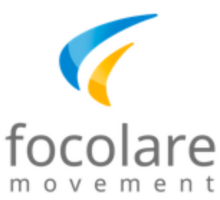Frequently asked questions
Frequently asked questions
What about the name “Focolare Movement”?
“Focolare” means “hearth” or “where the family gathers” in the dialect of Trent. It is the name that people in Trent gave to the first community started by Chiara Lubich and her companions. From the very beginning, this lifestyle recalled the warmth of a family. Its new and revolutionary message, inspired by the Gospel, has also been compared to a fire that inflames hearts and enlightens minds.
small communities of men and women who consecrate their lives to God with vows of poverty, chastity and obedience and live in separate households called “focolares”, from the Italian word for “hearth”. Married people are also members of these communities, while remaining in their families and being faithful to their commitment to marriage. They too make the same radical choice of the Gospel and offer their lives to bring unity in the world.
Who is Chiara Lubich for the Focolare Movement?
Chiara is the founder of the Focolare Movement. She was always its elected President until her death in 2008. She is considered to be one of the great charismatic figures of our times, recognized and esteemed by leaders of many Christian Churches, as well as of other religions, and by prominent politicians and leaders in many different countries. She received a variety of awards such as the UNESCO Prize for Peace Education, fifteen honorary doctorates (theology, ecumenism, psychology, arts, philosophy, economics…) and honorary citizenships from various cities throughout the world.
What about the governing body of the Focolare Movement?
Its main governing body is the General Council, led by a president (always a lay woman, as specified by its Statutes) and a co-president (always a priest), both of whom remain in office for a period of five years, renewable once.
What about the relationship of the Focolare Movement with the Catholic Church?
The Focolare Movement was approved by the Catholic Church in 1964 with the official name, “Work of Mary.” On June 29, 1990, the Pontifical Council of the Laity approved its current General Statutes and confirmed that it is a “private, universal association of the faithful,” and also declared it to be “a juridical entity in the canonical order by decree of the Holy See.” Wherever it is present, the Movement collaborates with leaders and representatives of the Catholic Church. It is also at the forefront in the work of ecumenical dialogue among Christians of other Churches.
How can one be part of the Focolare Movement?
Only three things are needed:
-
- to share the dream and the commitment of contributing towards making humanity one family united in love;
- to live this dream in one’s daily relationships. Christians get their inspiration to achieve this goal through the teachings of Jesus in the Gospel and in the Sacred Scripture. Followers of other religions are inspired by their respective Sacred Books, while those with no particular religious belief are inspired by ethical principles based on love and respect;
- to share this lifestyle with others and contribute together with them towards the realization of a united and peaceful world.
What are the Movemen’s activities?
The Focolare Movement feels called to contribute to accomplishing the unity of the human family through a wide variety of activities, which depend on the needs of various countries and locations. These activities have an impact on every area of society and all fields of study.
What is the Movement’s policy about the rules on protection of minors?
The Focolare Movement is fully committed to formulate policies and provide formation to its members so as to prevent any abuse whatsoever to minors involved in any activities of the Movement. A document has been drawn up at the international center of the Movement in Rome that applies worldwide. The movement also requires its members to follow the local and national regulations and laws of their own country, and in particular, to follow the principles set out by the UN Convention on the Rights of the Child. In May 2022, the President of the Focolare Movement declared her commitment to make it compulsory for every member worldwide, including minors themselves, to attend at least one basic course on the protection of children and vulnerable adults.
Is there a possibility of being updated about the Focolare Movement’s life and activities?
Through a system of notifications, the user can choose with which means and what content he/she would like to receive information on a regular basis.
The magazines of the Focolare Movement Città Nuova published in Italy, New City published in Great Britain, Living City published in the United States, New City published in the Philippines and in Kenya – are monthly or bi-monthly publications, some of which are available online. They offer articles on spirituality, current issues, life experiences in the area of dialogue and projects by individuals or groups that promote unity in a variety of fields. There are several language editions.
What does the Focolare Movement logo mean?
The Movement’s logo recalls “Mary, Mother of all people”, who gathers all vocations under her mantle. The blue symbolizes Mary, while the orange represents the members who follow Mary as the model for their life.
